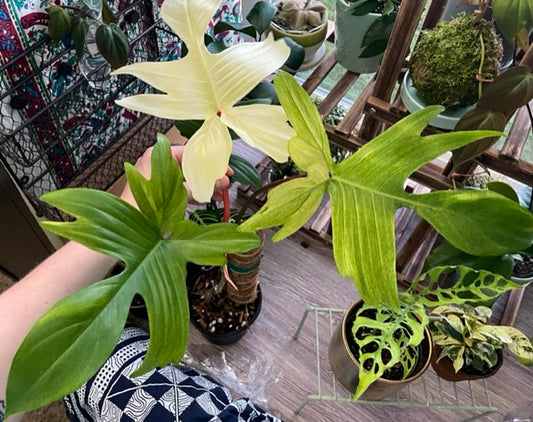Hello, fellow houseplant lovers.
Are you feeling the effects of winter in the Pacific Northwest on your wellbeing right about now? We feel the impact of less light due to our very short days and so do your houseplants. They have other winter needs too but the good news is that it is not too difficult to keep your houseplant collection healthy during this season. Just a little bit more care and they will come through beautifully.
Follow my best tips for winter care and I hope to see you at a houseplant seminar or workshop at Molbak’s soon. Click here for info on upcoming houseplant events.
- Follow the light
- With shorter and cloudier days, you may need to do some rearranging with your plants to make sure they are getting enough light; windows that receive afternoon sun are prime real estate this time of year.
- Rotate your plants a quarter-turn each week to ensure sunlight is reaching all sides.
- Once you’ve found the right spots for your plants, do your best not to move them from those spots until spring as they have a harder time acclimating to environmental changes this time of year.
- For spaces that don’t receive much natural light during the day, or are limited on window space, ‘grow lights’ can be a lifesaver. Investing in a grow light doesn’t need to be fancy or expensive – it’s as easy as swapping out one of your regular light bulbs with any bulb that is Full Spectrum LED.
- Be careful not to overwater
- Less light means moisture evaporates more slowly, and your soil will stay moist longer after watering.
- Make sure you are checking your soil before every watering to make sure your plant needs water – as a rule of thumb, the top inch of soil should be completely dry before watering for many types of houseplants. In the winter, this may mean waiting twice as long between waterings.
- It’s normal for plants to drop a few leaves in the winter, but frequent yellowing leaves can be a sign of overwatering.
- Overwatering can lead to root rot, which is irreversible, and it’s very difficult to salvage plants once root rot has set in.
- Cut back on fertilizer
- Fertilizer is important during spring and summer months, when houseplants are in their most active growing phases, but can be harmful during the winter when they tend to be dormant/in a resting phase and not producing new leaves.
- It’s easier to recover from under-fertilization than from over-fertilization, so my recommendation is to stop fertilizing in fall and resume in the spring.
- Familiarize yourself with signs of nutrient deficiencies and keep an eye on your plants for indicators that they need nutrients; while uncommon, our houseplants do like to keep up on our toes and there may be an occasional anomaly.
- Avoid temperature extremes
- The temperature in your house is fine for most houseplants during the winter (most prefer to be in temperatures above 58F).
- Drastic changes in temperature can stress and damage your plants, so do your best to keep their conditions relatively consistent during this particularly sensitive time of their year.
- Houseplants generally like warmer temperatures, but that does NOT mean they like to be near heaters or vents, which will very quickly crisp them beyond recovery.
- While it’s important to have your plants near windows to receive sunlight, it’s also important to make sure that your plant’s leaves aren’t in direct contact with the glass of your window, which can lead to cold damage.
- Keep plants away from doors and other drafty areas.
- HUMIDITY!
- The air in our homes tends to be significantly drier in the winter due to the need for constant heating, and this can take a toll on our plants, so it’s important to find ways to increase humidity around your plants.
- Grouping plants together is a great way to immediately increase humidity in that area – water lost through leaves and evaporating from the soil will increase the humidity around that particular cluster of plants.
- Pebble trays are another simple and affordable option, just be mindful that your pot sits above the water level.
- Plant cabinets and humidifiers can be especially helpful this time of year.
- Be on pest patrol
- Winter is a favorite time of year for many houseplant pests, like scale and spider mites.
- Take advantage of the time you’re not spending on watering/fertilizing during the winter and be extra vigilant in checking for pests.
- Thoroughly check the undersides of leaves and know what types of pest damage to be on the lookout for; if you’re not familiar with different pests, treatments, and preventative options, stop by and talk to one of our staff experts or check our events page for upcoming classes and workshops focused on houseplant care.
- Keep your leaves clean! Built up dust and debris on leaves makes it more difficult for plants to photosynthesize properly, and creates ideal conditions for some pests. Simply wiping down leaves with a damp cloth is all that is needed.



